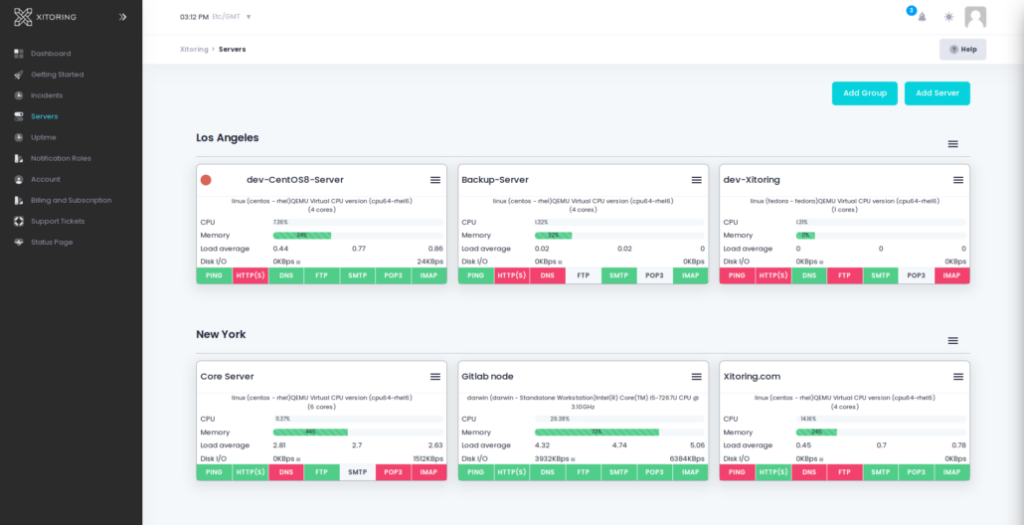
What is Uptime Monitoring?
Have you ever wondered what keeps your favorite websites and apps running smoothly without any interruptions? Well, it’s all thanks to uptime monitoring! In this article, we’ll break down the concept of uptime monitoring in simple terms and explain why it’s crucial for online services, websites, and applications. Additionally, we will see how it impacts businesses and organizations.
Uptime Monitoring
Uptime monitoring is like having a watchful eye on your digital systems, ensuring they are always up and running. Additionally, it’s all about checking if a website, app, or online service is available and working properly. The main goal is to ensure that these digital tools are accessible to users 24/7 without any hiccups.
The significance of uptime monitoring has grown tremendously with the rise of the internet and digital technology. In a world where business operations, communication, and information access increasingly depend on online services, consequently, any downtime can have far-reaching consequences. This article explores the vital role of uptime monitoring and its impact on various aspects of the online world.
Why Uptime Monitoring Matters
Downtime Costs and Consequences
As you know, downtime is the opposite of uptime and happens when a system or service goes offline. It can occur for various reasons, like technical glitches, network problems, software bugs, or even cyberattacks. The costs of downtime can be substantial. For e-commerce websites, every minute of downtime can mean losing thousands of dollars. In critical services like healthcare, downtime can even be life-threatening.
Reputation and Customer Satisfaction
The reputation of a business or organization can be significantly impacted by downtime. Customers expect reliable and uninterrupted access to online services. When services go down, users may become frustrated and start looking for alternatives. The loss of customer trust can be challenging to recover, and a tarnished reputation can have long-lasting effects on a company’s bottom line.
SEO and Search Ranking
Search engines like Google consider website uptime and performance when determining search rankings. Websites with frequent downtime and slow loading times are penalized in search results. This means that poor uptime can not only result in direct financial losses but also affect a website’s visibility and discoverability.
In the next section, we will explore the various methods of uptime monitoring and the metrics that are tracked to ensure the availability and performance of online services.
Methods of Uptime Monitoring
Passive vs. Active Monitoring
Uptime monitoring can be categorized into two main methods: passive and active monitoring.
- Passive Monitoring: In passive monitoring, data is collected from the system’s logs and network traffic. This approach doesn’t involve any direct interaction with the system but relies on analyzing the data generated by the system itself. Passive monitoring is excellent for identifying issues that might not be immediately apparent from the outside.
- Active Monitoring: Active monitoring, on the other hand, involves actively sending requests to the system being monitored. This approach simulates user interactions and provides a real-time assessment of the system’s availability and responsiveness.
Synthetic Monitoring
Moreover, synthetic monitoring is a popular method for uptime monitoring. It involves the creation of artificial test scenarios or transactions that simulate user interactions. These synthetic transactions are regularly performed to measure the system’s response time and identify potential issues.
Real User Monitoring (RUM)
Real User Monitoring, as the name suggests, involves tracking the actual experiences of real users. It collects data on user interactions, such as page load times, clicks, and interactions, providing a valuable perspective on how users are affected by the system’s performance.
Leveraging Third-party Monitoring Services
Many organizations opt to use third-party services like Xitoring that specialize in uptime monitoring. These services often offer a range of tools and options for monitoring and alerting, making them a convenient choice for businesses that want to outsource their monitoring needs.
Key Metrics to Monitor
Availability Percentage
One of the most critical metrics in uptime monitoring is the availability percentage. Additionally, this metric measures the portion of time that a system is accessible and operational. It is typically represented as a percentage, with 100% indicating continuous availability. Now, let’s see how these percentages can be shown on a public status page
Response Time
Response time is the measure of how quickly a system responds to user requests. Consequently, faster response times lead to a better user experience, while slow response times can result in frustration and abandonment of the service.
Error Rate
The error rate is the frequency at which errors or failures occur within the system. Consequently, monitoring the error rate helps in identifying and addressing issues promptly, preventing prolonged downtime or poor user experiences.
Scalability
Scalability is an important aspect of uptime monitoring, especially for growing businesses. Monitoring the system’s performance under different levels of load can help ensure that the system can handle increased demand without experiencing downtime.
Tools for Uptime Monitoring
Open-source vs. Commercial Tools
When it comes to uptime monitoring, there are various tools and solutions available, ranging from open-source to commercial options. The choice between these largely depends on the specific needs and budget of an organization.
- Open-source Tools: These are often free to use and provide a high degree of flexibility and customization. Popular open-source monitoring tools include Nagios, Zabbix, and Prometheus.
- Commercial Tools: Commercial uptime monitoring services offer a range of features, including user-friendly interfaces, advanced analytics, and customer support. Examples of commercial tools include Xitoring, Dynatrace, Pingdom.

Popular Uptime Monitoring Tools
Let’s take a closer look at some of the popular tools used for uptime monitoring:
- Xitoring: Xitoring is a All in One Monitoring platform goes beyond real-time uptime and server monitoring. It offers a range of integration options, making it adaptable to various software and systems. Xitoring boasts a user-friendly dashboard, providing easy-to-understand insights into your system’s health. Plus, it’s not limited to just one operating system; Xitoring supports both Windows and Linux servers, ensuring compatibility across different environments. What’s more, you get a customizable public status page to keep your users informed and reassured.
- Dynatrace: Much like Xitoring, Dynatrace is a cloud-based monitoring service with the added benefit of real-time alerts and performance data. It’s a top-notch choice for businesses seeking seamless and efficient monitoring solutions.
- Zabbix: abbix is more than just an open-source monitoring solution. It excels in monitoring servers, network devices, and applications. With its flexibility and scalability, Zabbix adapts to your ever-changing needs, ensuring that your systems run smoothly and efficiently.
The Impact of Uptime Monitoring
Business Continuity
Uptime monitoring plays a vital role in ensuring business continuity as it prevents disruptions in operations, safeguards revenue, and protects a company’s reputation.
Customer Trust and Loyalty
Customers rely on online services for various aspects of their lives, from shopping to communication. When a service is consistently available and responsive, users develop trust and loyalty. This translates into higher customer retention and increased customer lifetime value.
Competitive Advantage
In a competitive market, uptime monitoring can be a key differentiator. Organizations that can guarantee high availability and excellent performance gain a competitive edge. They can use their reliability as a selling point and attract more customers.
Uptime monitoring ensures that the digital world remains reliable and accessible. Furthermore, it’s not just a technical need; it’s crucial for businesses, organizations, and society. With potential financial losses, damage to reputation, and customer trust at stake, uptime monitoring is essential. Moreover, it’s the foundation of digital services and can make or break online ventures.
From methods and tools to key metrics, best practices, and real-world examples, uptime monitoring is a complex field requiring attention to detail and continuous improvement. As technology evolves, the challenges and opportunities in uptime monitoring will also evolve, reshaping the landscape as we rely more on digital services. So, remember, uptime monitoring is about safeguarding digital experiences, business interests, and the online world’s integrity. Its importance cannot be overstated.
Uptime monitoring ensures that the digital world is up and reachable. It’s not just a technical need but a business, organizational, and social imperative. When one thinks of potential financial loss, reputation damage, or even customer trust, uptime monitoring becomes vital. Furthermore, it forms the basis of every online service that determines whether an online venture will be successful or not.
Ready to take the next step when it comes to uptime monitoring? Take a tour of Xitoring: full-platform monitoring with real-time insights through a custom, public status page, support for both Windows and Linux servers-whether your online presence is as small as one website or into enterprise scale-ins, Xitoring provides every tool necessary.
Click to Begin Your Free Trial Today with 24/7 monitoring and alerts the moment an outage happens. Don’t let down time wreak havoc on your business – take control of your digital presence today!